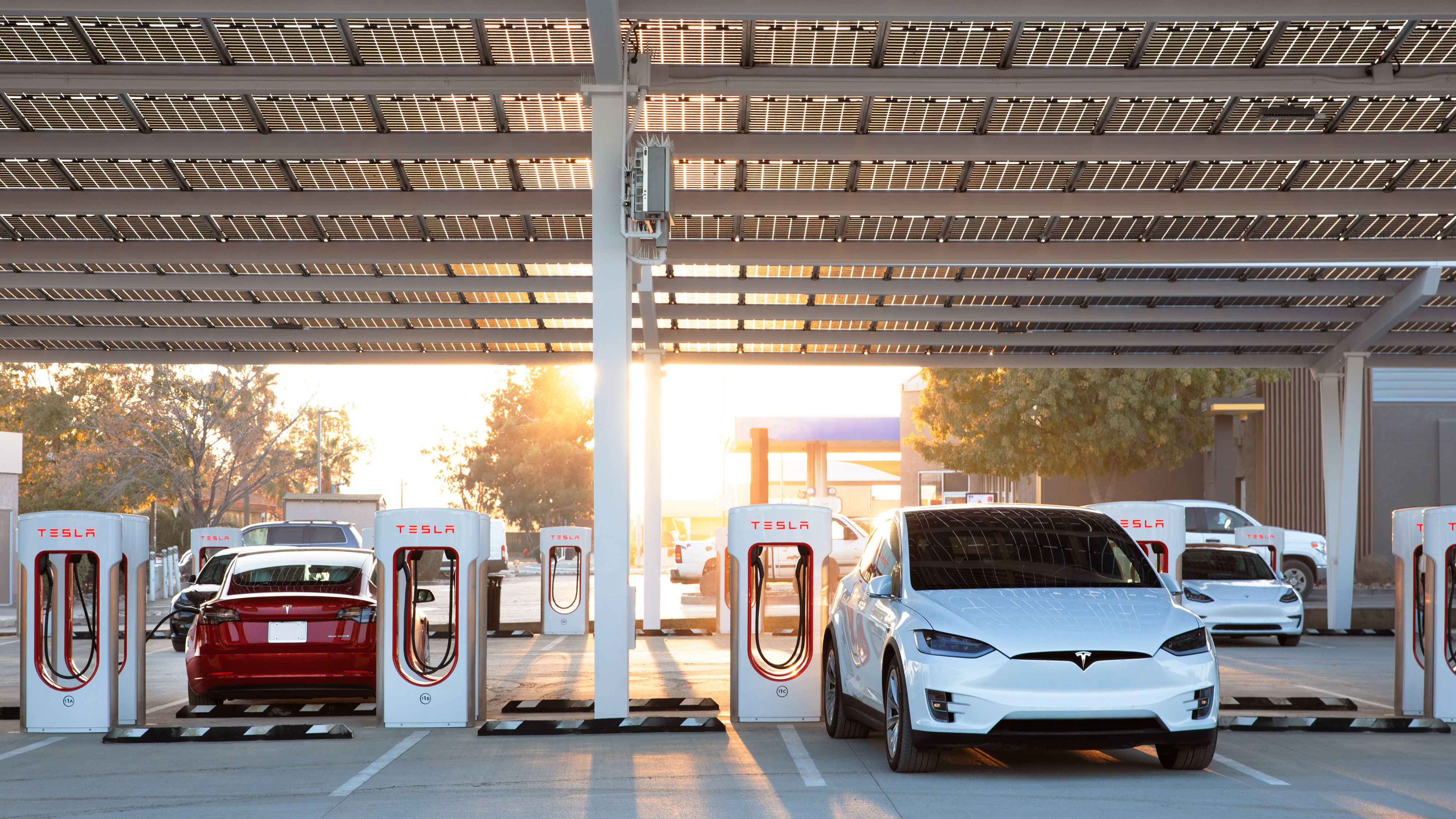How to find a Tesla Supercharger, and... what actually is it?

Tesla owners are in the enviable position of having their own dedicated charging network, one that spans the globe and is growing all the time. What's more, it offers quick and easy charging, which is essential for stress-free electric car ownership.
There are two ways you can charge a Tesla when you're not at home; one is to take advantage of the Tesla Supercharger network, which are fast charging points strategically positioned at many main highway locations.
Secondly, and quite cleverly, Tesla is also growing its range of Destination point locations, which is a worldwide selection of charging points situated in popular stop-off points. These include the likes of hotels, restaurants and other business or retail locations that Tesla owners are likely to frequent.
- EV charging connectors: what they are and how they compare
- How to charge a Tesla
- Everything we know about the Apple Car
The great thing about supplementing the Supercharger network with Destination points is that the latter allows you to charge your car while you're doing something else.
It's the perfect solution for that downtime faced by EV owners while they wait for their car battery to be replenished. Better still, finding a Supercharger, or indeed a Destination point is super easy, as you'll see below, so if you already know how to charge your Tesla, read on.
What is a Tesla Supercharger?
Not only has Tesla CEO Elon Musk developed a revolutionary EV brand, he has backed it up with a vision for a supporting charging infrastructure.
Tesla's first Supercharger network was connected in the US back in 2012 and it has been expanding ever since. The Tesla Supercharger connection point can currently be used to recharge the Tesla Model S, Tesla Model X, Tesla Model 3 and Tesla Model Y at 72 kW, 150 kW or 250 kW depending on the model year.
Sign up for breaking news, reviews, opinion, top tech deals, and more.
Cars have their batteries replenished using a direct current or DC charge that on average allows a Tesla to be charged to about 50% in 20 minutes, 80% in 40 minutes with a full charge taking around 75 minutes for the Model S.
However, newer models and Tesla's charging infrastructure is evolving all the time. The company now has V3 Superchargers that can charge at 250 kW allowing newer cars to gain up to 15 miles for every minute they're connected in the US.
What charging will cost you, if anything, depends on the Tesla model you own and when you bought it. Some models have the benefit of free supercharging for the life of the car, although others have an allowance for charging, between 100 and 400 kWh per year. Others offer financial credit instead.
Ultimately, if you own a Tesla and any costs are incurred that need to be covered then the unique Tesla account that belongs to the car will be used cover any outstanding amounts.
Alongside its Tesla Supercharger network the automaker also has its Destination Chargers, which can often be found close to hotels, restaurants and other retail areas.
They generally offer slower charging at 22 kW, but are usually free to use and have grown in popularity as they allow Tesla owners to do other things while their vehicle is being topped up.

How do I find a Tesla Supercharger?
As sales of its vehicles increase Tesla is expanding the charging network all the time too, with over 25,000 Supercharger stations currently online and ready for use.
More are in the pipeline too, so finding one of the 25,000 plus Supercharger points is likely to become even easier in the future. For now, even if you live in an area less well served by the Tesla charging network, it's relatively easy to locate one of the charging points.
Finding a Tesla Supercharger, or indeed a Destination point, can be done in your car, by using your phone, laptop or home computer.
The bonus about that is it's possible to check that you can charge your Tesla even if you don't have your usual option to hand. If you're searching from your Tesla then simply use the car's infotainment system to locate a charge point.
Alternatively, the Tesla app offers freedom and convenience to look up Supercharger points in advance or if you're not at your car. If you're at home, or in the office for example, it's quick and easy to pinpoint a Supercharger location on your mobile device.
Using a laptop or PC offers the same kind of solution, meaning that you can locate a Tesla Supercharger when it suits you most.
Tesla has also developed its Go Anywhere tool, which is perfect for exploring a route that you are expecting to take in the near future. Simply enter your destination and Go Anywhere will map the route and automatically work out the most efficient way to get there.
Crucially, it'll also flag up Supercharger and Destination points along the way. This not only offers piece of mind, but lets you break up your journey with the odd social break along the way too.

Rob Clymo has been a tech journalist for more years than he can actually remember, having started out in the wacky world of print magazines before discovering the power of the internet. Since he's been all-digital he has run the Innovation channel during a few years at Microsoft as well as turning out regular news, reviews, features and other content for the likes of TechRadar, TechRadar Pro, Tom's Guide, Fit&Well, Gizmodo, Shortlist, Automotive Interiors World, Automotive Testing Technology International, Future of Transportation and Electric & Hybrid Vehicle Technology International. In the rare moments he's not working he's usually out and about on one of numerous e-bikes in his collection.